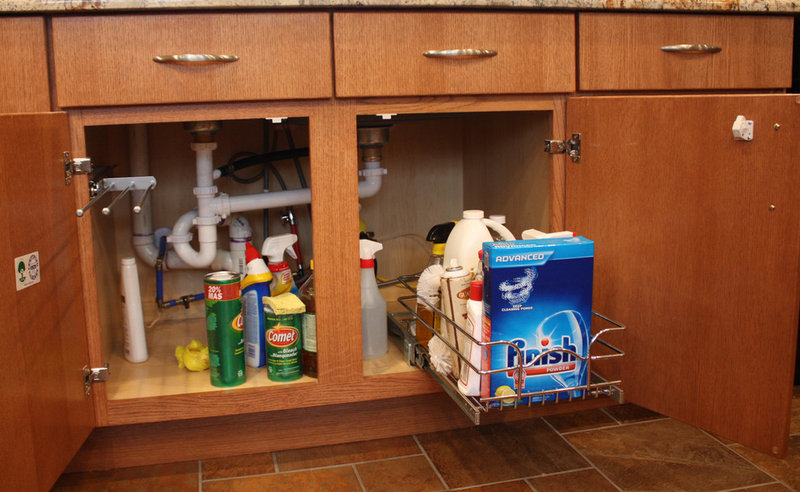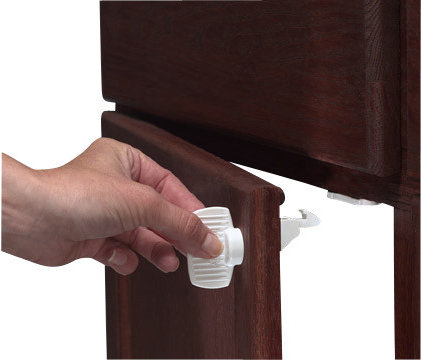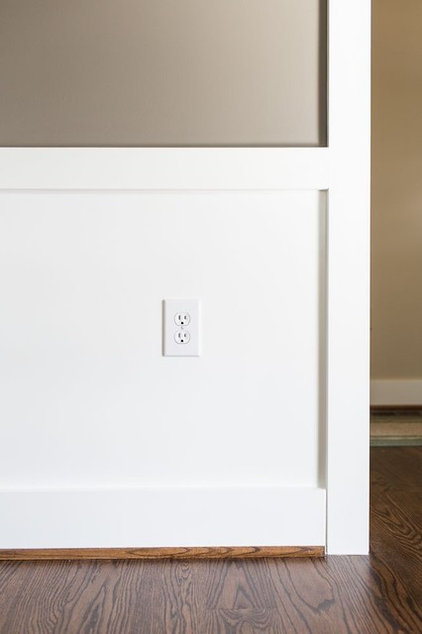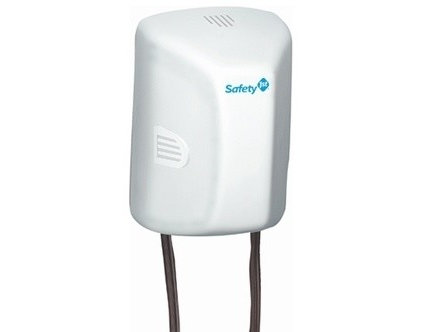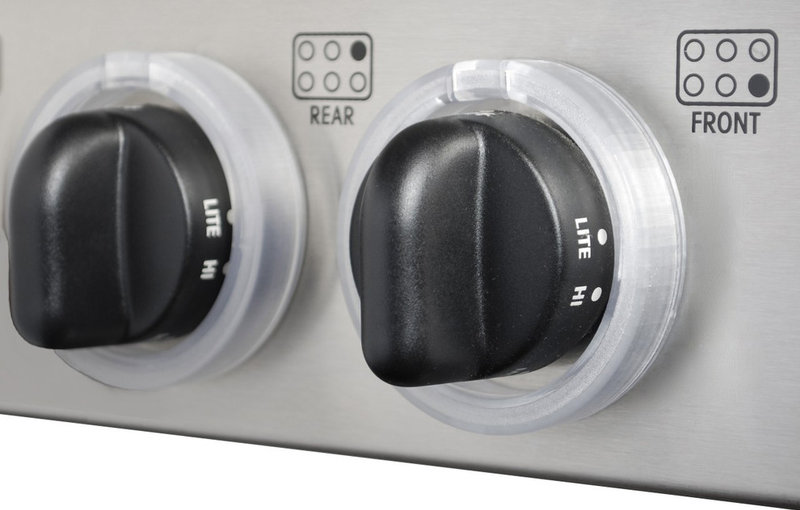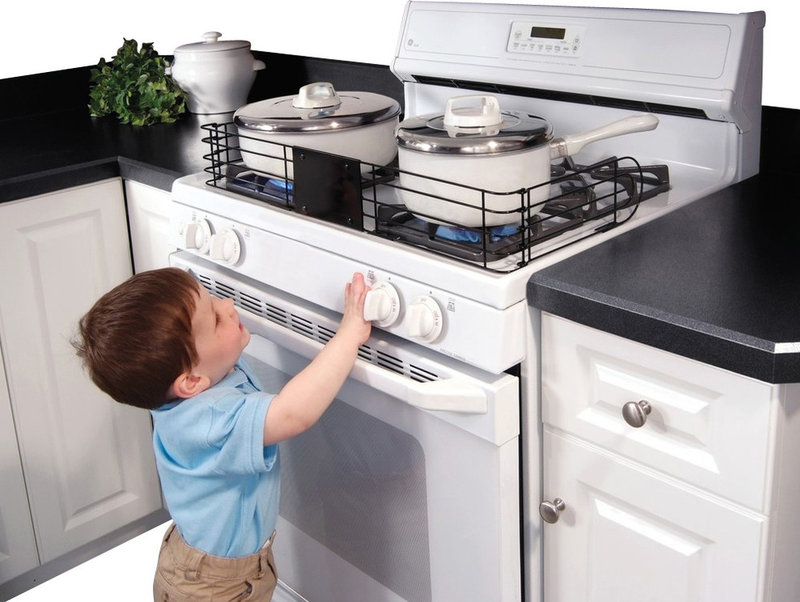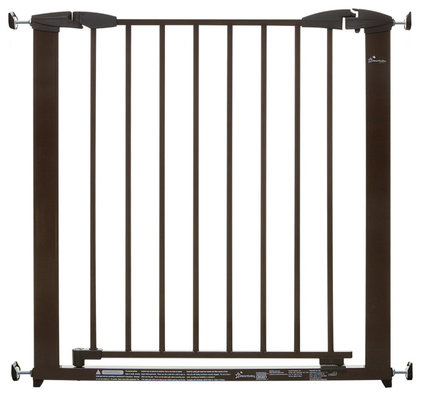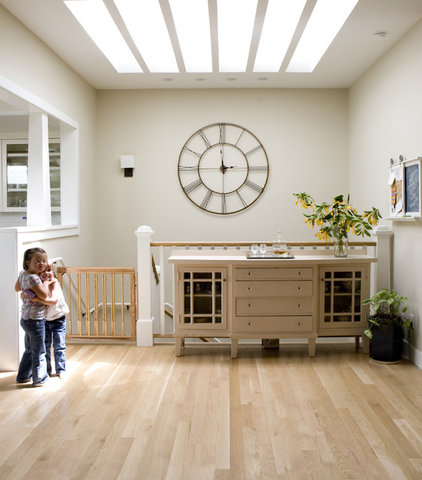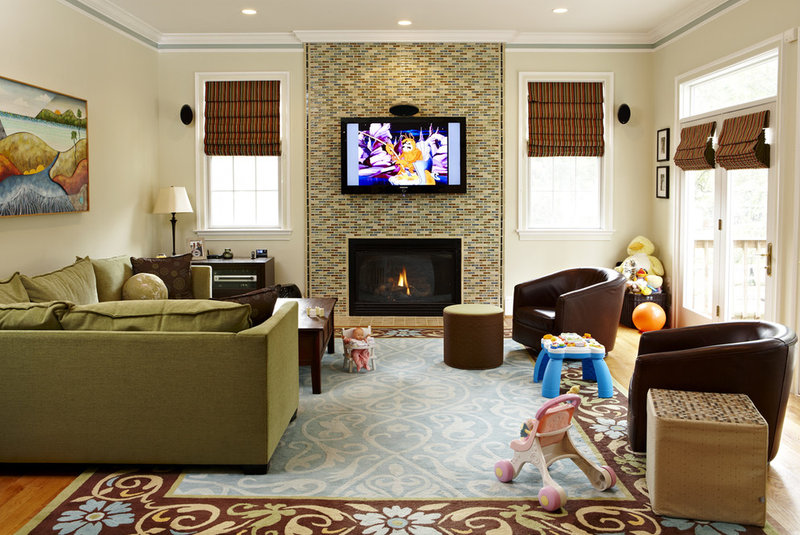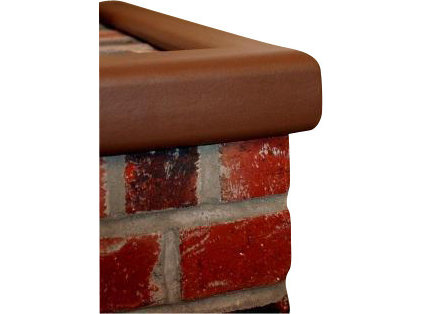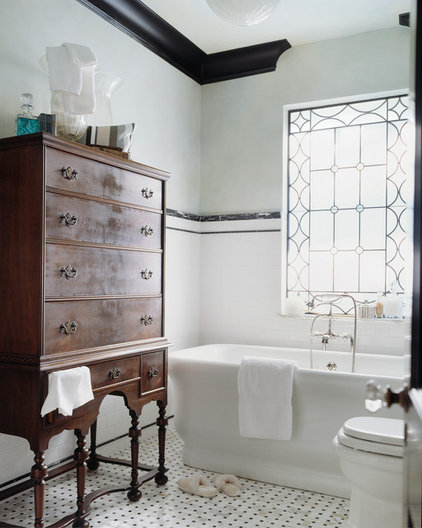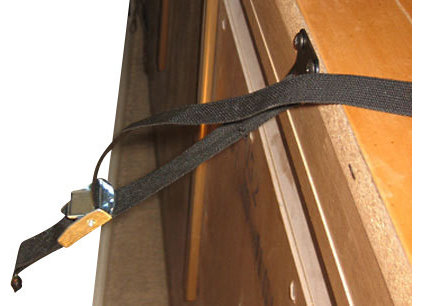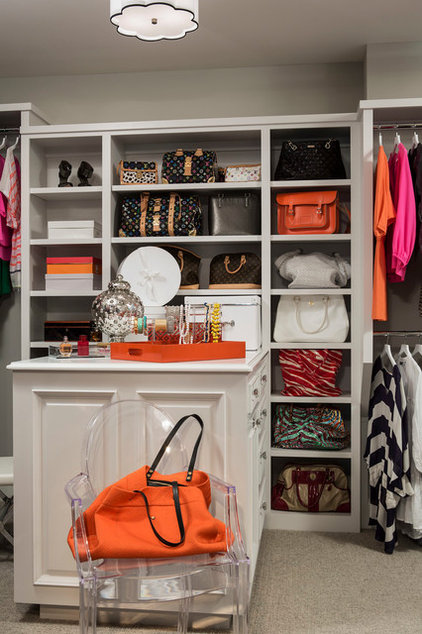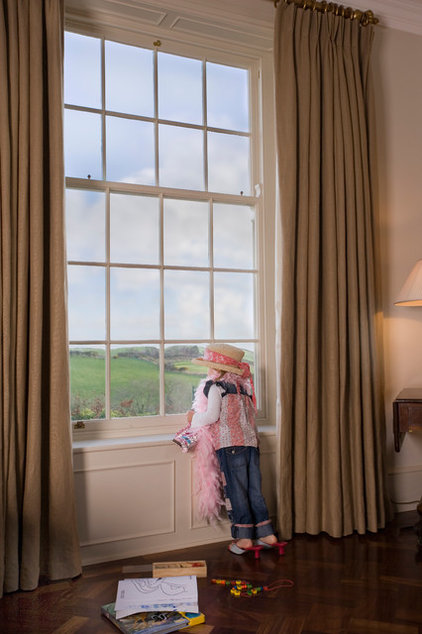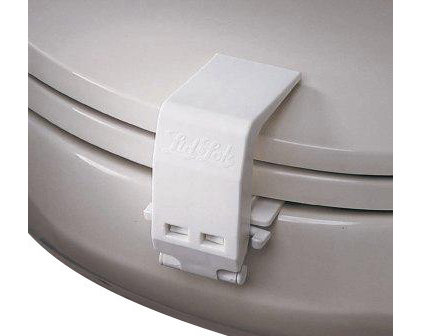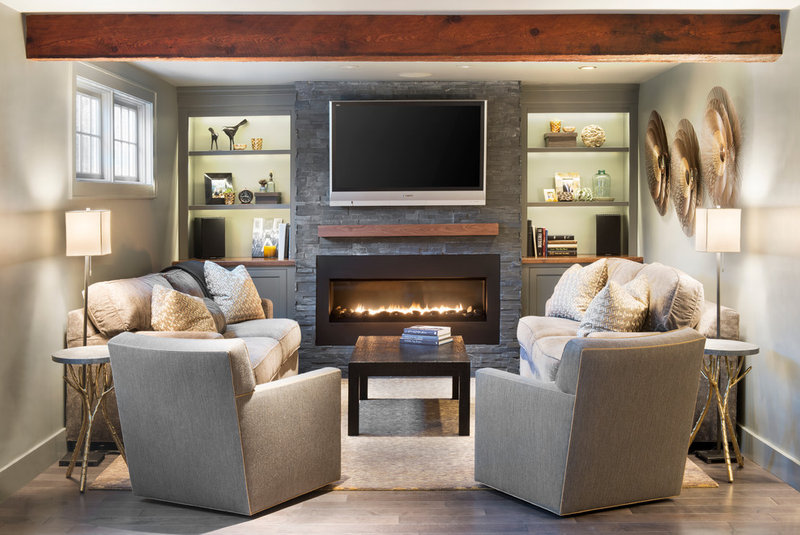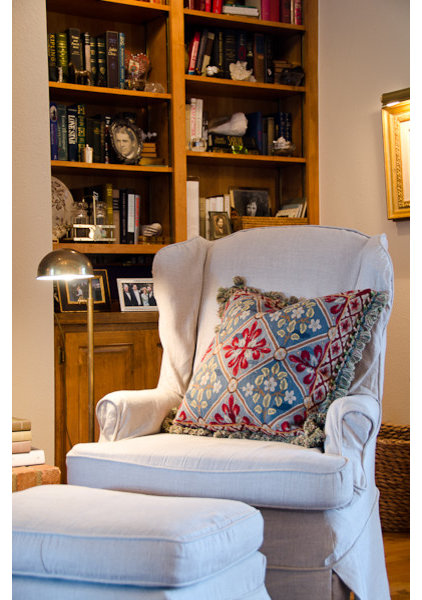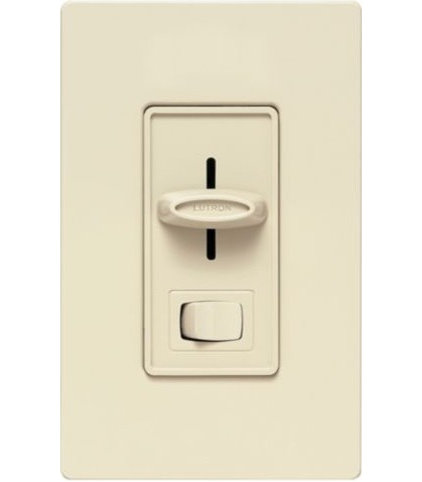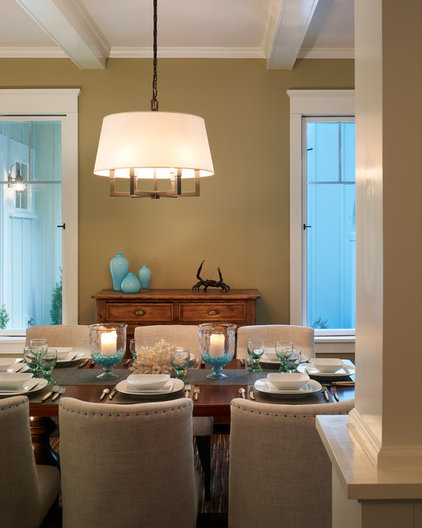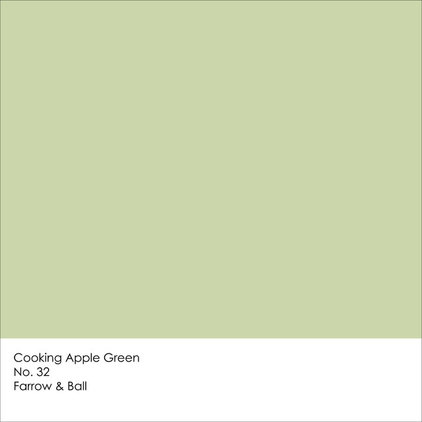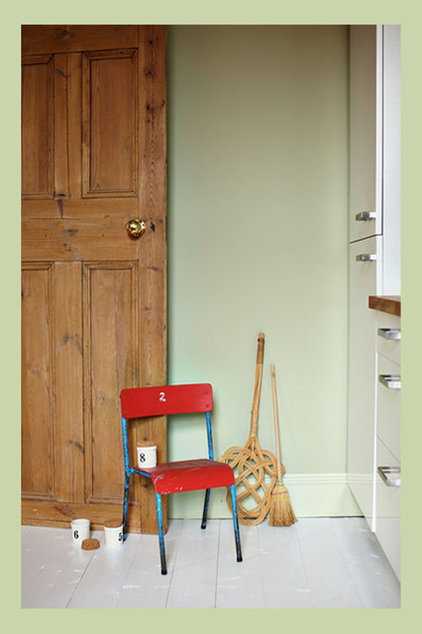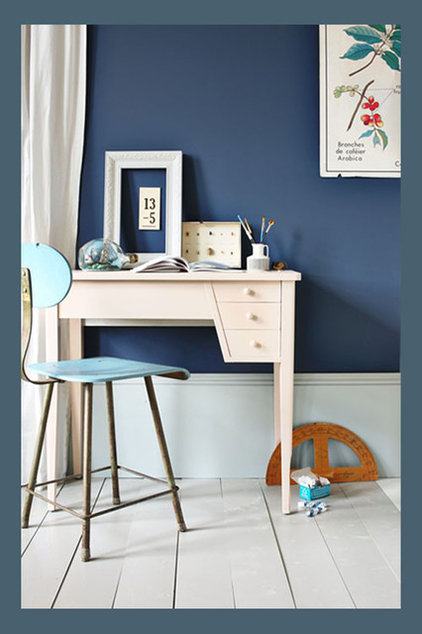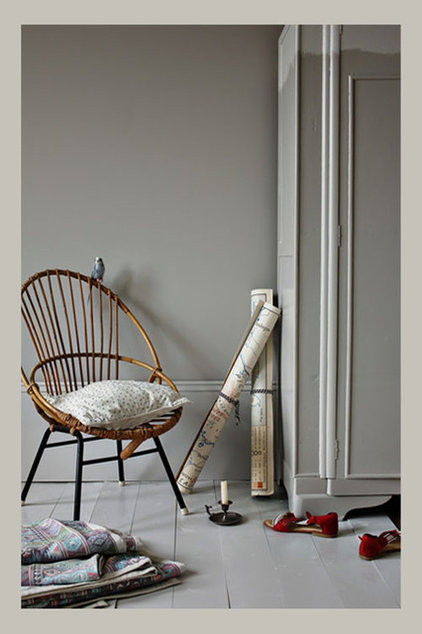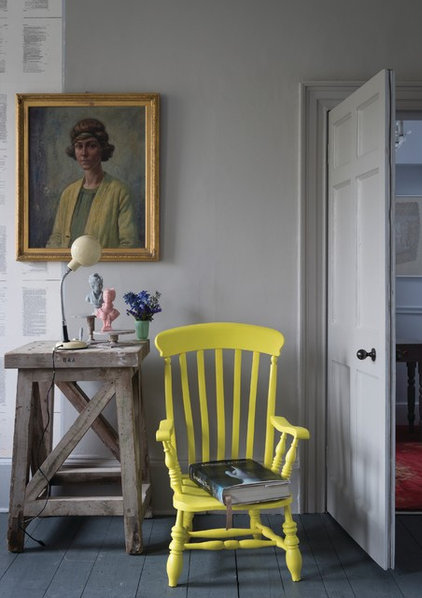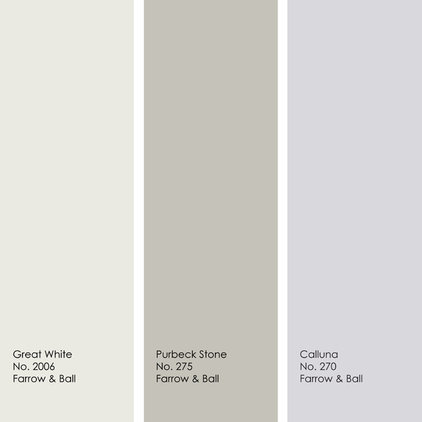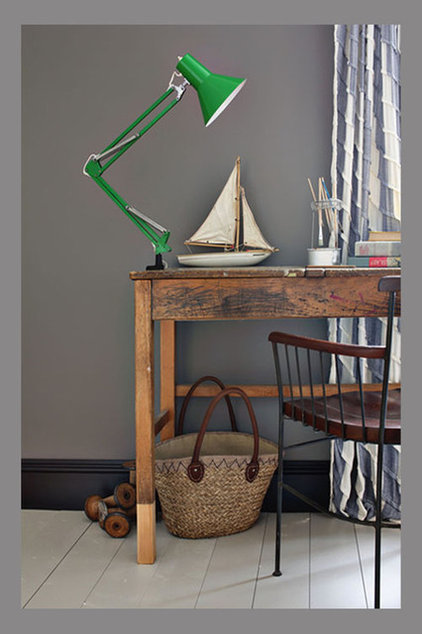By Becky Dietrich - Houzz Contributor
All of us with children are grimly aware of the safety issues they
face out in the world. But did you know that a child is statistically
far more likely to experience an accident or a fatality inside his or her own home? Fortunately, these injuries are easily avoided with a little education and prevention.
I am going to address this topic in two parts. Here I’ll share the opinions of experts, including the U.S. Consumer Product Safety Commission (CPSC) and Anne Altman, a childproofing consultant in Santa Rosa, California. Then, in a separate ideabook, I will share my perspective on childproofing as a grandmother and an interior designer.
I am going to address this topic in two parts. Here I’ll share the opinions of experts, including the U.S. Consumer Product Safety Commission (CPSC) and Anne Altman, a childproofing consultant in Santa Rosa, California. Then, in a separate ideabook, I will share my perspective on childproofing as a grandmother and an interior designer.
Let’s start with household
poisons. A huge percentage of household products, from cleansers and
kitchen knives to medicines (both over-the-counter and prescription) are
potentially deadly to children and should be kept either well out of
reach or behind locked cabinets.
Even with that accomplished, keep the poison control hotline on speed dial.
Even with that accomplished, keep the poison control hotline on speed dial.
Another major safety issue is
electrical outlets. They are often at perfect eye level for crawling
babies, and they can be dangerous indeed. Avoid the old-style plug-in
safety caps, as they can present a choking hazard, and little fingers
often have no trouble extricating them from the outlet. Use sliding
safety latches instead …
… or a safety cover like this one
that completely encloses outlets and plugs and stores up to 4 feet of
cord. It’s perfect for permanently plugged-in devices and features a
child-resistant dual-press release. It is appropriate for use on all
standard single-screw outlets.
Also, don’t forget to cover the exposed outlets in any extension cords with electrical tape.
Also, don’t forget to cover the exposed outlets in any extension cords with electrical tape.
What is it about those damnable
stove knobs that are so appealing to kids? When my twin granddaughters
were toddlers, they would employ the divide-and-conquer technique: No
sooner would I admonish and remove Alyssa than her sister, Alexis, would
take her place. A knob-locking mechanism is one way to deal with this
problem.
Installing a stove guard like
this one is another excellent safety measure. In addition, cook as much
as possible on the back burners of your stove, and always turn your pot
handles away from the edge so children can’t pull pots over and burn
themselves.
Be sure your stairs are gated top
and bottom. And don’t use a pressure-style gate at the top if you can
avoid it; a screw-into-the-wall version is much more secure.
Childproofing consultant Altman reminds us, though, that “childproofing is an ongoing process. The gate you put at the top of the stairs for your 1-year-old may become his favorite climbing structure when he’s 2.”
Childproofing consultant Altman reminds us, though, that “childproofing is an ongoing process. The gate you put at the top of the stairs for your 1-year-old may become his favorite climbing structure when he’s 2.”
We are all pretty much aware of
the strangulation risk posed by cords on window blinds and shades.
Securing the cords well out of reach, or using cordless versions, is
imperative.
But did you know that imported vinyl miniblinds can be a source of household lead? In 1996 the CPSC discovered that some of these blinds, which use lead as a stabilizer for the plastic, pose a lead poisoning hazard to young children who touch the blinds and then put their fingers in their mouths.
If you have children 6 or younger, remove any vinyl miniblinds made before July 1996 (or any you’re not sure are lead-free), and replace them with new lead-free vinyl blinds. Look for packaging with the phrases “nonleaded formula” or “no lead added.”
But did you know that imported vinyl miniblinds can be a source of household lead? In 1996 the CPSC discovered that some of these blinds, which use lead as a stabilizer for the plastic, pose a lead poisoning hazard to young children who touch the blinds and then put their fingers in their mouths.
If you have children 6 or younger, remove any vinyl miniblinds made before July 1996 (or any you’re not sure are lead-free), and replace them with new lead-free vinyl blinds. Look for packaging with the phrases “nonleaded formula” or “no lead added.”
Sharp corners are another common hazard, especially those found on coffee tables and raised hearths. Baby Center recommends covering all sharp corners and hearth edges with bumpers like these to soften any impact.
Isn’t this a gorgeous chest? But
it is also a significant hazard to your ones, particularly when they
start to climb. Babies start pulling up on furniture shortly after they
start crawling. And when they learn how to climb, well, can you spell
T-R-O-U-B-L-E?
According to the CPSC, more than 16,000 children under the age of 5 went to the emergency room in 2006 with injuries caused by tipped-over television sets, bookcases and other furniture and appliances. Between 2000 and 2006, more than 130 young children died from furniture tip-overs.
According to the CPSC, more than 16,000 children under the age of 5 went to the emergency room in 2006 with injuries caused by tipped-over television sets, bookcases and other furniture and appliances. Between 2000 and 2006, more than 130 young children died from furniture tip-overs.
Fortunately, this is a very easy
fix. Tipping restraints for furniture and appliances are available in
many forms, and have the added perk of offering protection against
earthquake damage.
You can also do things like loading drawers with heavier items on the bottom, so that the furniture is not top-heavy. And never leave drawers open; open drawers create the perfect ladder.
You can also do things like loading drawers with heavier items on the bottom, so that the furniture is not top-heavy. And never leave drawers open; open drawers create the perfect ladder.
Children are insatiably curious
about what lurks inside of purses and briefcases, so beware when Grandma
(or another relative or friend) comes to visit. Loose coins, gum,
medicine, cosmetics, cigarettes and matches are just a few of the items
commonly stashed in a purse that can be deadly to a small child, so be
sure to keep your company’s belongings well out of reach.
While windows are wonderful
architectural elements, they can be dangerous for children. To avoid
injuries, keep windows locked and screens in place. A young child could
squeeze through a window opened as little as 5 inches, and screens are
not strong enough to keep a child inside.
Finally, experts suggest that parents prepare for the emergencies they do their best to prevent. First, learn cardiopulmonary resuscitation (CPR) and the abdominal thrust procedure (Heimlich maneuver). Second, make sure you have a well-equipped first aid kit with emergency instructions close at hand. And third, make sure that important numbers — like your work and cell phone, poison control, your pediatrician and a neighbor or nearby relative — are posted someplace where caregivers or family members can easily find them.
